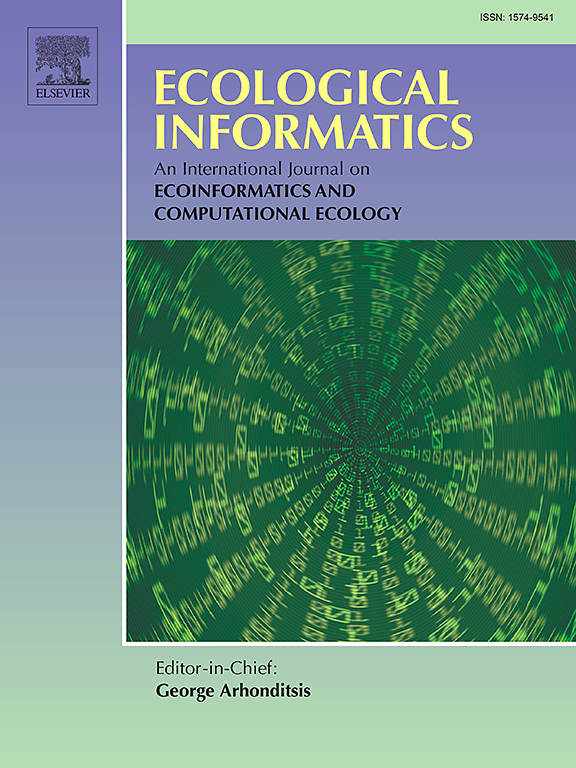Comparing the performance of vegetation indices for improving urban vegetation GPP estimation via eddy covariance flux data and Landsat 5/7 data
IF 5.8
2区 环境科学与生态学
Q1 ECOLOGY
引用次数: 0
Abstract
Urban vegetation is pivotal in enhancing regional ecological balance and sequestering significant amounts of carbon dioxide (CO2) through photosynthesis, thereby contributing substantially to regional carbon budgets. However, the gross primary productivity (GPP) of urban vegetation remains underexplored due to the absence of robust estimation methodologies, often leading to its exclusion from global and regional carbon budgets. Advances in vegetation indices (VIs) offer promising solutions for improving the accuracy and spatial resolution of urban GPP estimation. In this study, we compared the performance of the enhanced vegetation index (EVI), normalized difference vegetation index (NDVI), near-infrared reflectance of vegetation (NIRv), and kernel normalized difference vegetation index (kNDVI) calculated from Landsat 5/7 images in estimating flux-site-level GPP and incorporated meteorological factors to construct a high-performance VI-GPP model for urban GPP estimation. Our findings demonstrated that the EVI, NIRv, and kNDVI exhibited stronger correlations with GPP dynamics and higher R2 values than did the NDVI in linear VI-GPP relationships across most plant functional types (PFTs). Exceptions were observed in evergreen broadleaf forest (EBF), evergreen needle-leaf forest (ENF), and savanna (SAV), where GPP variations were strongly influenced by temperature, shortwave radiation, and vapor pressure. Incorporating these meteorological factors significantly enhanced GPP estimation accuracy for these PFTs. Among the indices, the NIRv achieved the highest overall model performance, with an R2 of 0.60 and a root-mean-square error (RMSE) of 2.05 g C m−2 d−1 across PFTs. The kNDVI demonstrated unique advantages for specific PFTs, such as deciduous broadleaf forest (DBF) and ENF. Compared with existing VI-GPP relationships created with coarse-spatial-resolution remote sensing data, our model was more suitable for high-spatial-resolution GPP estimation in urban areas. Our results highlight the performance of the NIRv and kNDVI in urban vegetation GPP estimation and provide a solution for estimating fine-resolution GPP to reveal the importance of urban vegetation to regional carbon budgets.
求助全文
约1分钟内获得全文
求助全文
来源期刊

Ecological Informatics
环境科学-生态学
CiteScore
8.30
自引率
11.80%
发文量
346
审稿时长
46 days
期刊介绍:
The journal Ecological Informatics is devoted to the publication of high quality, peer-reviewed articles on all aspects of computational ecology, data science and biogeography. The scope of the journal takes into account the data-intensive nature of ecology, the growing capacity of information technology to access, harness and leverage complex data as well as the critical need for informing sustainable management in view of global environmental and climate change.
The nature of the journal is interdisciplinary at the crossover between ecology and informatics. It focuses on novel concepts and techniques for image- and genome-based monitoring and interpretation, sensor- and multimedia-based data acquisition, internet-based data archiving and sharing, data assimilation, modelling and prediction of ecological data.
 求助内容:
求助内容: 应助结果提醒方式:
应助结果提醒方式:


